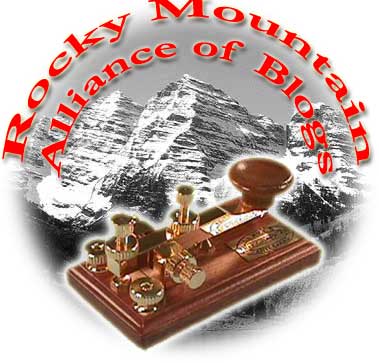...but not very well.
Apprently, the work I helped out on last year has, ah, struck a nerve over at Morningstar, where John Rekenthaler, VP of research, has sallied out to meet the attackers ("In Defense of Style Boxes") in this month's Investment Advisor. He takes the litigator's approach: "my dog doesn't bite, and anyway, that's not my dog." In this case. it translates roughtly as, "style boxes work, because people don't use them the way you say they do; and even if they did use them that way, they'd still work."
While conceding the main research points, Rekenthaler has to distort our assertions in order to deflect them.
Nothing so drastic as investing 100% in a single style grid is required for maintaining "style purity." Even if a portfolio manager were morbidly concerned about adhering to Morningstar’s style definitions, the manager would have much more flexibility than is implied by this study. That is because the Morningstar style designations are averages of a portfolio’s positions, with no minimum requirement that stocks be in any particular grid. Strictly speaking, it is possible, although quite unlikely, that a fund could occupy a style grid without having a single stock of that style type....
Finally, every manager with whom we have ever spoken has considered overall portfolio issues when implementing a strategy. So, regarding a strategy’s top-ranked selections as the true portfolio that would exist if the managers disregarded the style policy is not realistic.
And yet, every manager we spoke to, the ones who actually have to manage inside this grid, and to face investors and advisors on a quarterly basis, expressed frustration with the limits that the boxes put on them. Every one spoke of investments foregone becuase it would place them too far outside the box.
Morningstar's use of the average to characterize the fund is also misleading. They speak derisively of Lipper's "Multi-cap" designation, calling it the "junk drawer." where Lipper can store everything that doesn't fit. And yet, the multi-cap funds have outperformed the single-cap funds for a while now.
Lipper also provides a service telling a fund manager when his fund is getting close to changing Lipper boxes, helping them game the system. Whence the demand for such a service?
Finally, these boxes are beginning to take on the air of a regulatory authority. Funds need the approval of their investors to change their stated investment objective. Should a fund drift outside its box, and stay outside its box, there's the risk either of regulatory disapproval or shareholder litigation.
All in all, the world of characteristic-defined funds behaves much more like we say than like he says. The fact that Morningstar shouts, Bart Simpson-like, from the rooftops that, "I didn't do it," hasn't kept them from profiting mightily from that misuse.
The authors’ second claim is that style boxes are not asset classes. According to them, asset classes should be obviously and readily definable entities with widely agreed-upon definitions. However, they point out, style-box grids are defined differently by different organizations. The authors also argue that asset classes should have low correlations with each other. Finally, the authors state that asset classes should have a stable membership; that is, securities should not periodically change their asset classes.The first and third points, those of the ease of definition and stable membership, reflect the authors’ preferences, no more.
Points One and Three are, at least partially, a way of getting to point Two. I would argue that any of the major indexers - S&P, Morgan-Stanlet, Wilshire, Russel, would agree that they each have useful definitions of "Large" and "Small." But if a word is to be widely used, the various participants should at least be able to agree on what it means. We didn't uncover small differences of opinion, we encountered wholesale overlaps:
Only half of the Morningstar mid-cap stocks were categorized that way by S&P, and a little less than 75% of Morningstar’s small-cap stocks were called small cap by S&P. Over all, there was slightly more than 30% disagreement between the two information services on how individual stocks should be categorized in these supposed "asset classes."... S&P does not have a "core" category. Among the stocks not in the Morningstar core category, S&P and Morningstar disagree on 20% of the remaining value or growth stocks. That is a remarkably large area of disagreement for supposed "asset classes."
... Fully 50% of the Morningstar "mid-cap" stocks are smaller than the largest "small-cap" stocks in the S&P classification, and a little over 23% of the "large-cap" stocks are smaller than the largest "mid-cap" stocks in S&P.
On point Three, we have no problem with funds and indexers periodically deciding that Amazon or Google no longer qualify as small-cap. But when almost 10% of the stocks indexed drift back and forth over the value-growth line on a regular basis, one doubts whether the classifications are capturing behavior.
The problem is, as Rekenthaler suggests, one of behavior. If the definitions are so fluid that one stock can be put all over the map, depending on which service is doing the rating, and if these various classifications accurately capture the stock's behavior, then perhaps (cough) we really are dealing with a single asset class called, "US stocks."
Rekenthaler argues:
The problem is, asset-class behaviors change over time, enough to confound simple correlation rules. For example, in the first half of the 1990s, the Lehman Brothers Aggregate Bond Index had a 0.60 correlation with the S&P 500. In contrast, in the first half of the current decade, the Morningstar Large Value index had but a 0.39 correlation with the Small Growth index. So, what’s that about bonds and stocks are asset classes, but style grids are not?
Yes, and if you compare the mileage of my grandfather's Studebaker to that of the 18-wheeler Rekenthaler is looking at in his rear-view mirror, you'll conclude that cars today just aren't any more fuel efficient than they were 50 years ago. Comparing bonds vs. stocks during a period of stable growth to stocks vs. stocks during a period of international chaos is like asking to be published in the Journal of Irreproducible Results. We know that small and large, value and growth have some differences in performance. That those differences would be magnified during a decade with several multi-sigma events is hardly surprising. For the record, when we compared the Morgan-Stanley Large Value to its Small Growth from 1992-2003, we got a correlation of 0.672.
Rekenthaler's comparison of Morningstar's Four Corners from the years 1999-2001 is similarly loaded:

Uh-oh. In the most dramatic marketplace in your clients’ memories, the single most critical element in their investment returns was how much money they had in Large Growth style stocks, as opposed to Small Value. And you didn’t clue them in.
No kidding. A sector comparison between techs and industrials, or say, tulip and onion bulbs, would probably show the same thing.
Rekenthaler doesn't tell you whether or not he loaded the deck. Morningstar reworked their classification methodology in 2002, and used 1999-2001 as part of the input to the optimization. Any sane methodology would show similar. But these things matter - the correlations among boxes using the current methodology are much higher going forward from 2002. (Again for the record, Rekenthaler returned my email from his vacation in Japan, but a firm response on this point will have to wait until he's back stateside. Frankly, it was nice of him to reply at all from vacation.)
Look, Rekenthaler's no idiot, and he wouldn't last 10 minutes in this business if he were dishonest. But he's got a vested interest in perpetuating Morningstar's methodology, at least until they can wean themselves from it.
































